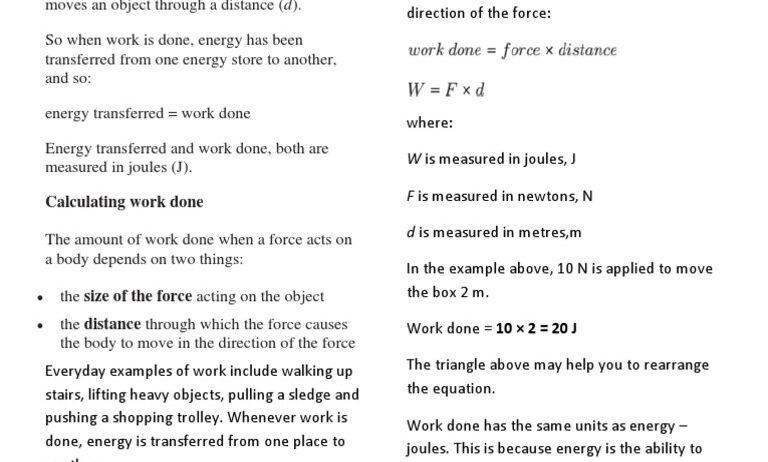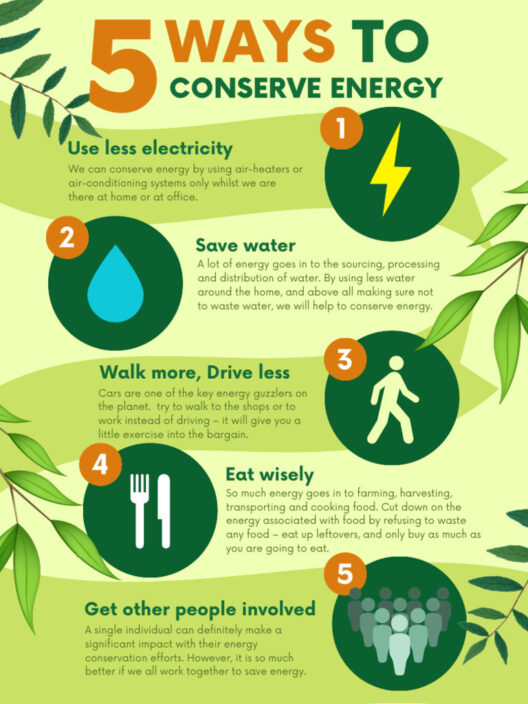Potential energy, a critical concept in physics, refers to the energy held by an object due to its position relative to other objects. In many applications, particularly in the context of conservation and environmental responsibility, understanding how to conserve and optimize potential energy can significantly impact energy usage and, ultimately, our ecological footprint.
Primarily, potential energy manifests in several forms: gravitational, elastic, and chemical. Gravitational potential energy is the energy possessed by an object due to its elevation. For instance, a rock perched atop a hill has a considerable amount of gravitational potential energy, which can be converted into kinetic energy if it rolls down. In contrast, elastic potential energy is associated with objects that can be stretched or compressed, such as springs. Lastly, chemical potential energy is stored within chemical bonds and can be released during chemical reactions. To effectively conserve potential energy, it’s important to grasp these distinct types.
One practical approach to conserving gravitational potential energy is optimizing building design. Structures built on elevated terrains can minimize energy consumption by harnessing their height for natural water flow and drainage, thereby reducing the need for mechanical pumps. Additionally, utilizing terraced landscaping can create a harmonious balance between aesthetic appeal and energy functionality. By retaining water and allowing it to seep gradually into the ground, these designs mitigate the potential for flooding and promote groundwater recharge, thus aligning with environmental sustainability.
Further, creating green roofs can offer dual benefits. These innovations act as insulation, reducing energy demands for heating and cooling, while concurrently establishing habitats that promote biodiversity. Indoor energy conservation can be enhanced by positioning windows and openings to maximize natural light and airflow, minimizing reliance on artificial lighting and HVAC systems.
Moreover, individuals can contribute to the conservation of potential energy through daily lifestyle choices. One key practice involves reducing the height from which items are unnecessarily dropped or relocated. For instance, reconsidering the need to lift heavy objects to elevated shelves can diminish the potential energy expended when those items are dropped, ultimately conserving energy and resources.
Another area ripe for energy conservation lies within the realm of elastic potential energy. Springs and elastic materials are ubiquitous in various mechanical systems, and their optimization can lead to substantial energy savings. Proper maintenance of equipment utilizing springs ensures that they function efficiently. Additionally, exploring innovative designs, such as using advanced materials with better elasticity, can yield higher energy retention and efficiency. An example includes utilizing composite materials in bicycle suspensions to improve shock absorption while conserving energy during rides.
Furthermore, in the pursuit of chemical potential energy conservation, individuals and communities can opt for renewable energy sources such as solar, wind, and hydroelectric power. Transitioning away from fossil fuels not only mitigates the emission of greenhouse gases but also enhances the potential energy capture from natural processes. Solar panels, for instance, convert sunlight into chemical energy, which can later be transformed into electrical energy. Rainwater harvesting systems are another method through which households can conserve chemical potential energy associated with water usage while simultaneously reducing reliance on municipal supplies.
Alongside these methods, education and awareness play pivotal roles in the conservation of potential energy. Initiatives that encourage energy-saving practices can help communities comprehend the impact of their energy consumption patterns. Workshops demonstrating how to create energy-efficient appliances or emphasizing the importance of reducing waste can foster a culture of conservation. Simple actions, such as switching off electrical devices when not in use and embracing energy-efficient alternatives, can collectively result in substantial energy savings.
Additionally, installing energy-efficient appliances contributes to the reduction of potential energy waste. High-efficiency models are designed to minimize energy consumption, thereby conserving both potential and kinetic energy during their operation. Making the choice to upgrade older appliances is a tangible way to affect energy conservation positively.
The role of transportation should also not be overlooked in discussions regarding potential energy conservation. Electric and hybrid vehicles convert and store energy differently than traditional gas-powered automobiles. Utilizing regenerative braking systems, these vehicles capture kinetic energy during deceleration and convert it back into potential energy stored in batteries, which can then be used for acceleration. Thus, shifting towards sustainable transportation options is essential in augmenting overall energy conservation efforts.
Corporate responsibility also plays a vital role in retaining potential energy. Businesses can implement strategies to reduce their energy consumption significantly by analyzing their operational procedures. For instance, conducting energy audits can clarify areas high in energy waste. Involving employees in sustainability practices cultivates an environment where conservation is a shared responsibility, ultimately leading to an energy-efficient workplace.
Communities can further enhance their energy conservation ethos by designing urban spaces that promote walkability and the use of public transport. Reducing reliance on motor vehicles minimizes energy consumption on an individual level, while collectively, such measures can lead to a significant decrease in carbon emissions, thereby conserving potential energy in the broader context of environmental stewardship.
In conclusion, the conservation of potential energy encompasses numerous strategies that integrate individual choices, community initiatives, and corporate responsibility. The dynamic interplay among gravitational, elastic, and chemical potential energy reveals opportunities for significant energy savings. By adopting a holistic approach to energy conservation, one not only supports the preservation of resources for future generations but also contributes to a more sustainable planet, proving that simple physics can indeed translate into profound ecological impacts.








